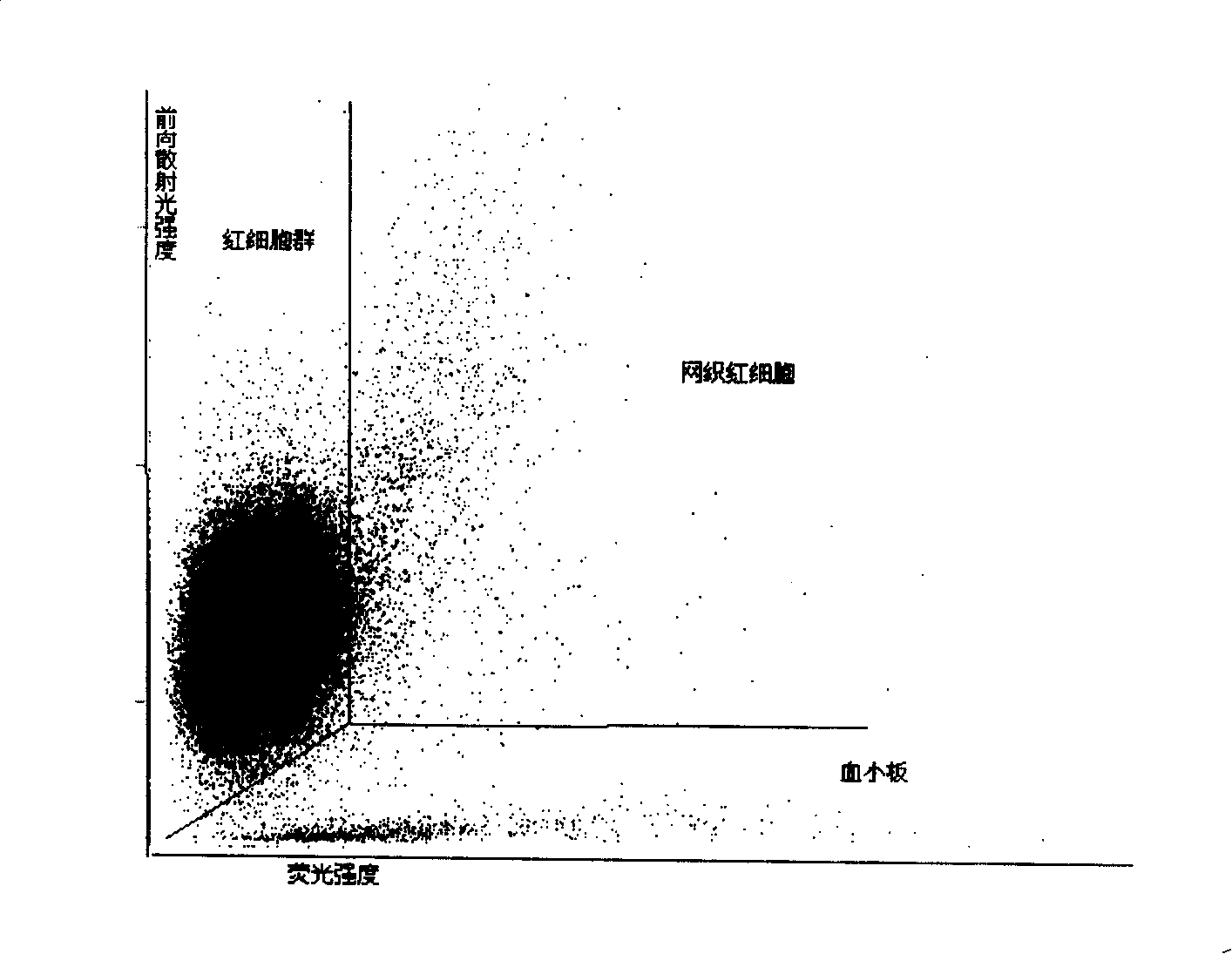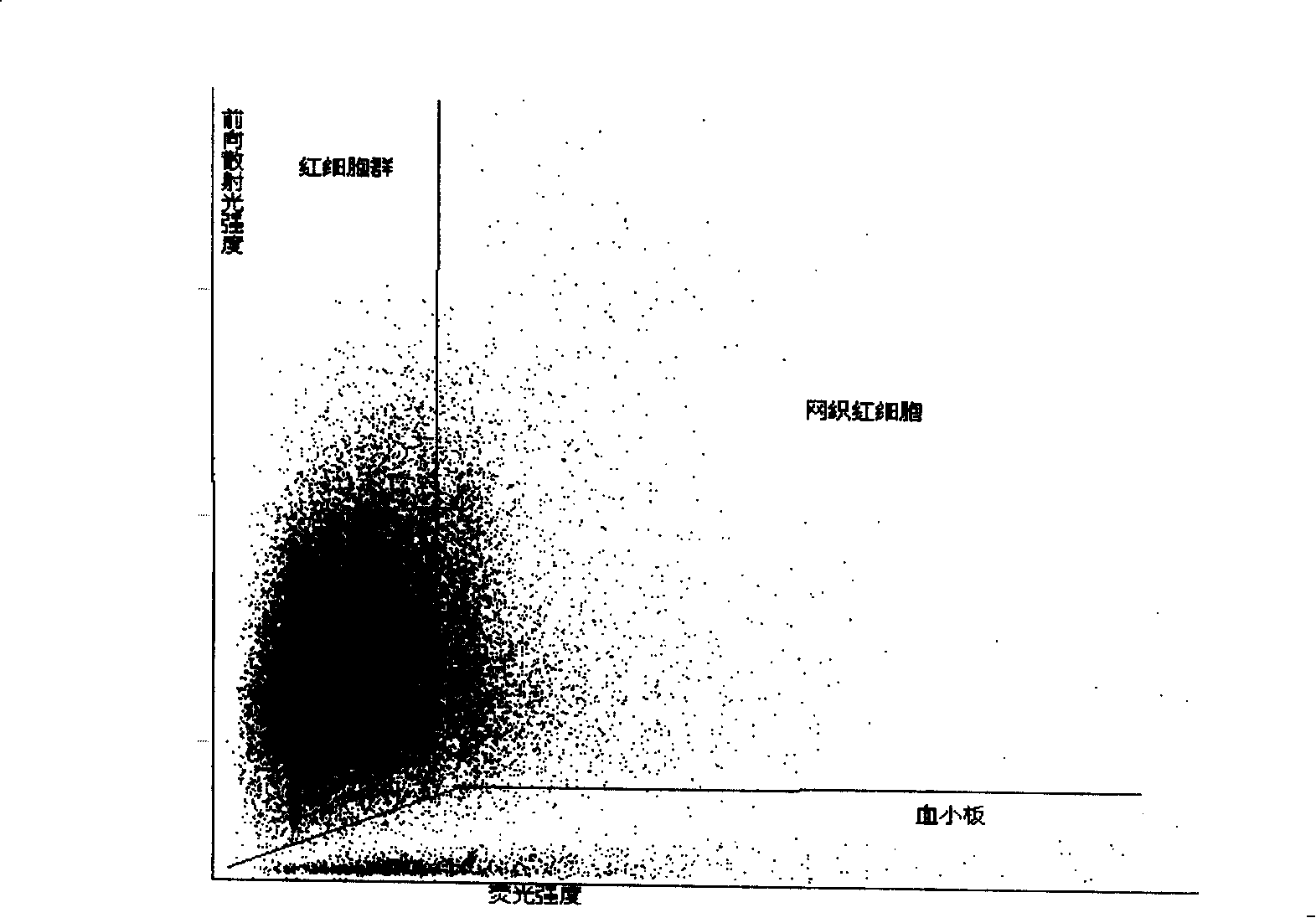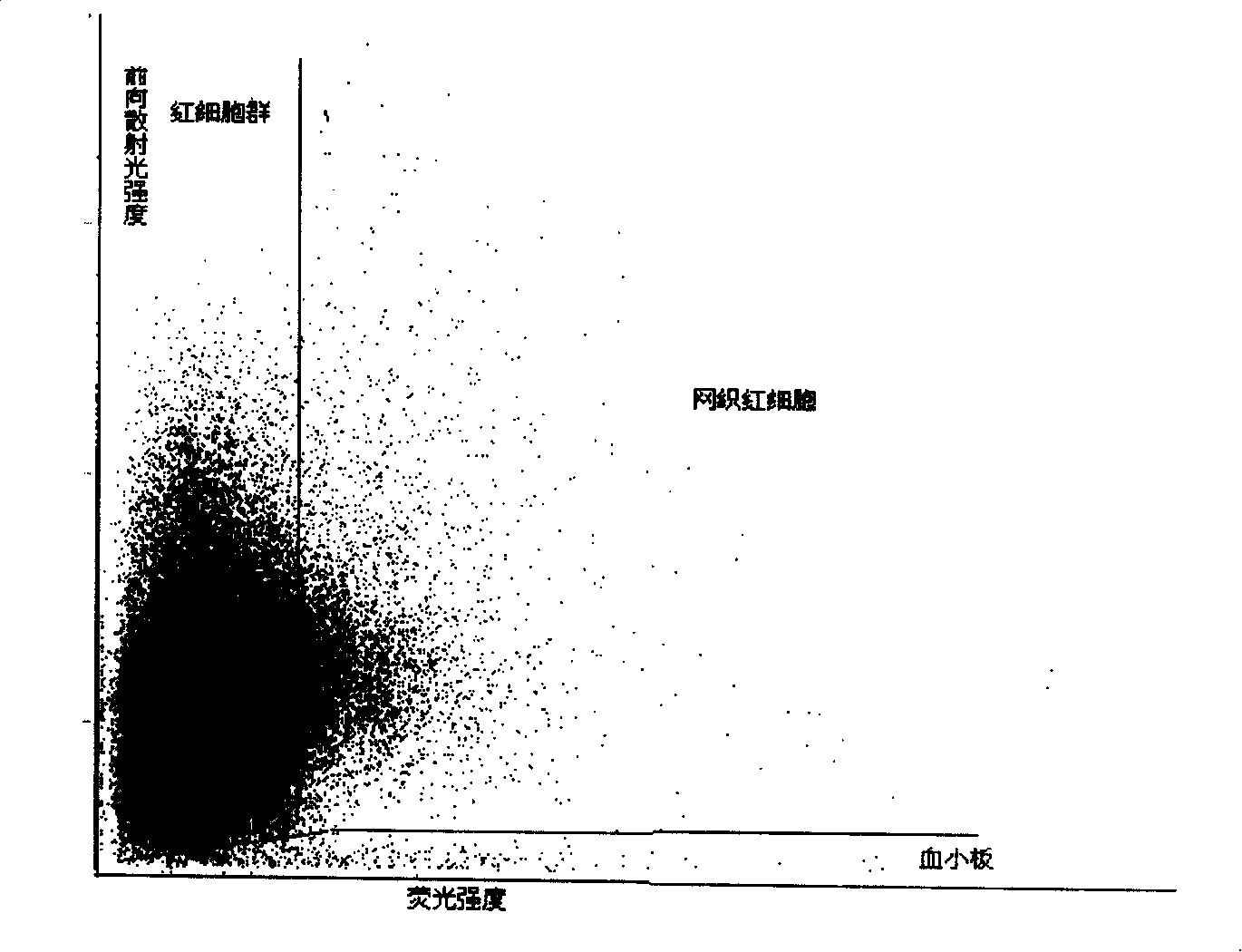Agent and method for testing reticulocyte
A technology for reticulocytes and detection reagents, which is applied in biological testing, biochemical equipment and methods, material testing products, etc., can solve the problems of high fluorescence background, errors, and unfavorable standard marking of blood analyzers, and achieves good repeatability, Good consistency and low non-specific fluorescence background
- Summary
- Abstract
- Description
- Claims
- Application Information
AI Technical Summary
Problems solved by technology
Method used
Image
Examples
Embodiment 1
[0073] Configure the reticulocyte detection reagent composed as follows.
[0074] Fluorescent dye (III) 7mg
[0075] NaH 2 PO 4 .H 2 O 53.8mg
[0076] Na 2 HPO 4 .7H 2 O 163.4mg
[0077] Cocamidopropyl Betaine 100mg
[0078] Delicate water 1L
[0079] (adjust pH to 7)
[0080] 4 microliters of anticoagulant-treated blood were added to 1 milliliter of the reagent, and left at a constant temperature at 40° C. for 30 seconds, or incubated in an incubation tank for 30 seconds, to form a measurement sample. The sample for measurement is detected by a detection instrument with a red semiconductor laser, the excitation wavelength is 633nm-635nm, and the power is 5mW. By measuring the forward low-angle scattered light intensity and fluorescence intensity, the following figure 1 The scatter plot shown, where the proportion of reticulocytes (RET) in the total erythrocytes is 1.25%.
[0081] In addition, the same blood sample was detected by traditional manual microscopy met...
Embodiment 2
[0084] Configure the reticulocyte detection reagent composed as follows.
[0085] Fluorescent dye (III) 7mg
[0086] NaH 2 PO 4 .H 2 O 53.8mg
[0087] Na 2 HPO 4 .7H 2 O 163.4mg
[0088] Cocamidopropyl Betaine 100mg
[0089] Delicate water 1L
[0090] (adjust pH to 7)
[0091] Add 4 microliters of anticoagulant-treated blood to 1 milliliter of the reagent, place it at a constant temperature at 40° C. for 30 seconds, or incubate in an incubation pool for 30 seconds to form a test sample. The sample for measurement is detected by a detection instrument with a red semiconductor laser, the excitation wavelength is 633nm-635nm, and the power is 5mW. By measuring the forward low-angle scattered light intensity and fluorescence intensity, the following figure 2 The scatter plot shown. Among them, reticulocytes (RET) accounted for 5.08% of the total red blood cells.
[0092] In addition, the same blood sample was tested by traditional manual microscopy, and the result w...
Embodiment 3
[0096] A reagent for measuring reticulocytes with the following composition was prepared.
[0097] Fluorescent dye (IV) 7mg
[0098] Disodium hydrogen phosphate 53.8mg
[0099] Sodium dihydrogen phosphate 163.4mg
[0100] Cocamidopropyl Betaine 100mg
[0101] Delicate water 1L
[0102] (adjust pH to 7)
[0103] Add 4 microliters of anticoagulant-treated blood to 1 milliliter of the reagent, place it at a constant temperature at 40° C. for 30 seconds, or incubate in an incubation pool for 30 seconds to form a test sample. The sample for measurement is detected by a detection instrument with a red semiconductor laser, the excitation wavelength is 633nm-635nm, and the power is 5mW. By measuring the forward low-angle scattered light intensity and fluorescence intensity, the following image 3 The scatter plot shown. Among them, reticulocytes (RET) accounted for 5.35% of the total red blood cells.
[0104] In addition, the same blood sample was tested by traditional manual ...
PUM
| Property | Measurement | Unit |
|---|---|---|
| concentration | aaaaa | aaaaa |
| concentration | aaaaa | aaaaa |
| wavelength | aaaaa | aaaaa |
Abstract
Description
Claims
Application Information
 Login to View More
Login to View More - R&D
- Intellectual Property
- Life Sciences
- Materials
- Tech Scout
- Unparalleled Data Quality
- Higher Quality Content
- 60% Fewer Hallucinations
Browse by: Latest US Patents, China's latest patents, Technical Efficacy Thesaurus, Application Domain, Technology Topic, Popular Technical Reports.
© 2025 PatSnap. All rights reserved.Legal|Privacy policy|Modern Slavery Act Transparency Statement|Sitemap|About US| Contact US: help@patsnap.com



